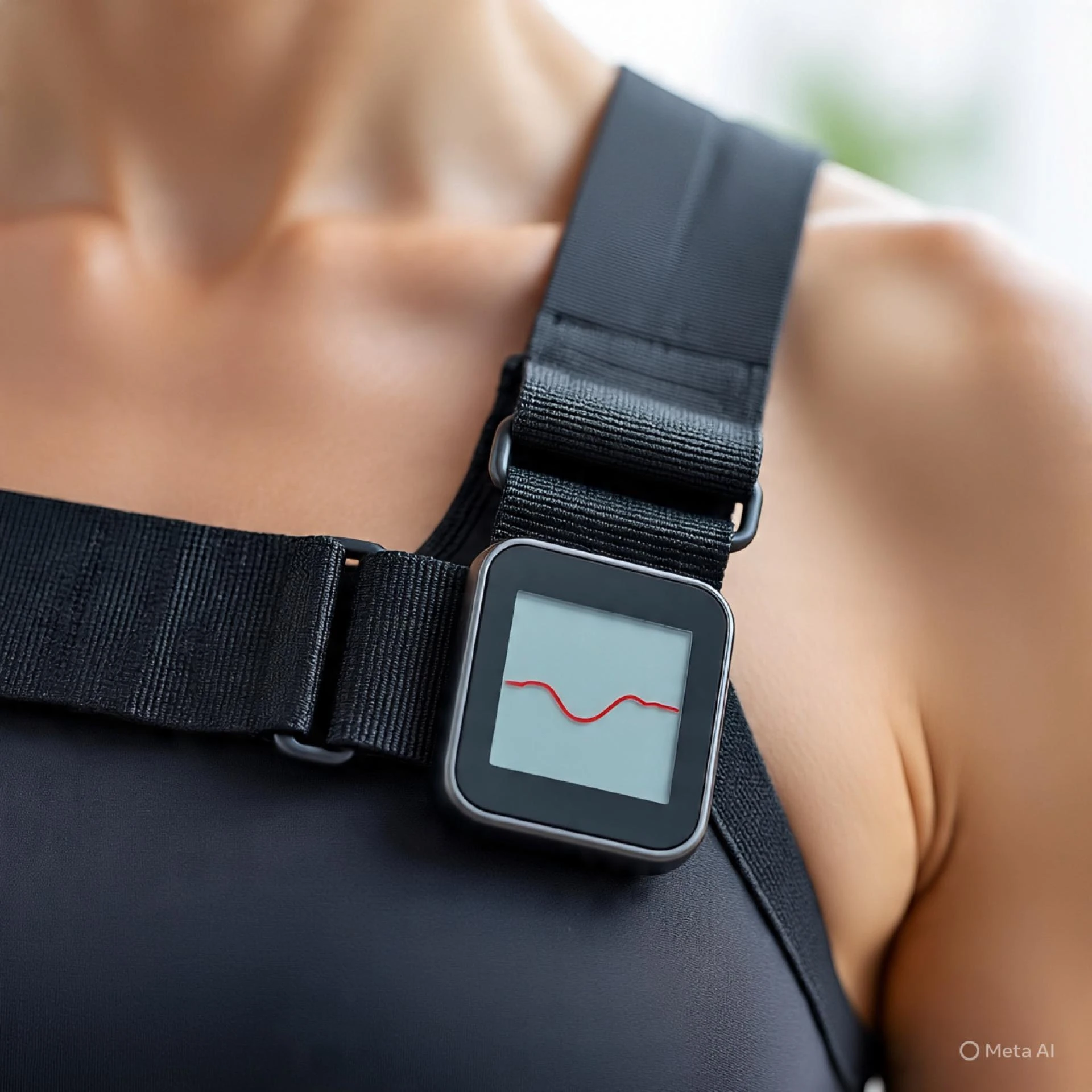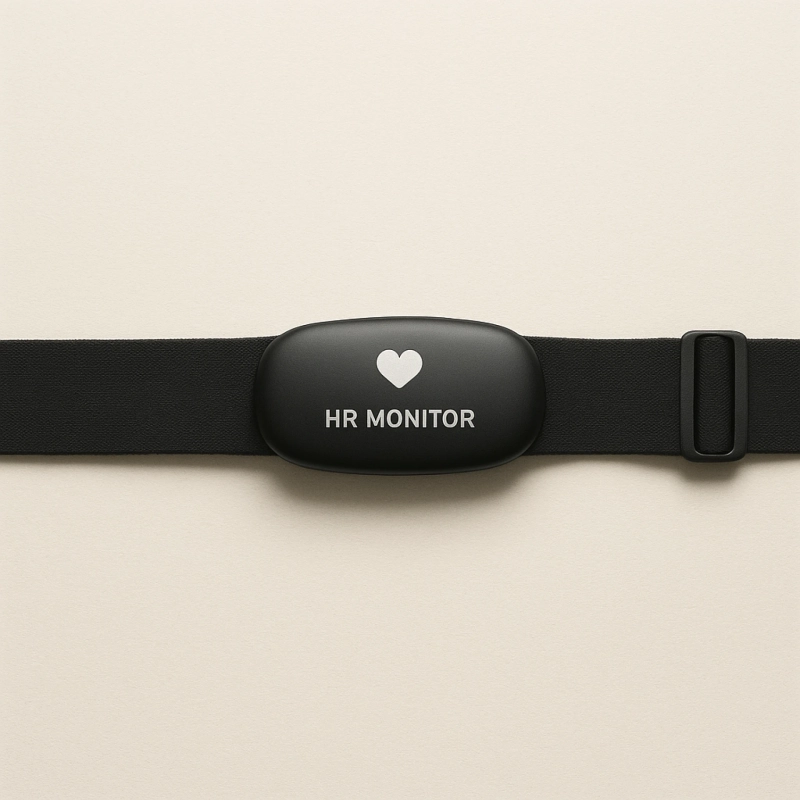What is a Chest Strap HR Monitor?
A Chest Strap HR Monitor, also called a chest strap heart rate monitor, is a fitness tool that tracks your heart rate during exercise. It looks like a band that you wear around your chest. It works by detecting your heartbeat and sending the data to your smartwatch, smartphone, or gym machine.
Many athletes and fitness lovers use chest strap monitors to check how hard they are working during workouts. It helps in training smarter, not just harder. Chest strap monitors are known for their accuracy, even more than wrist-based trackers.
In this article, we will look at what makes a chest strap HR monitor helpful, how it works, the types available, how to choose the right one, and some care tips. This is your full guide in simple and clear language.
How Chest Strap Monitors Work
Chest strap HR monitors work by sensing the electrical signals of your heart. When your heart beats, it gives off a small electrical signal. The chest strap has sensors that pick up this signal. This is the same way doctors measure your heartbeat using machines like ECGs.
The strap is worn tightly around your chest, just under the breast area. It stays in contact with your skin to catch the signals correctly. Once the sensor reads your heartbeat, it sends the data through Bluetooth or ANT+ to a connected device like a watch or smartphone.
Most chest strap HR monitors run on coin cell batteries. These batteries last several months, sometimes up to a year, before needing replacement. The good thing is that these straps don’t need to be charged every day like smartwatches.
Why is this method so accurate? Because it catches your heart's actual electrical activity, not just a pulse in your wrist. That’s why chest straps are preferred by athletes, runners, cyclists, and fitness trainers who need real-time and exact heart rate data.
Also, many straps now store data in built-in memory. So, even if your phone isn’t near you during a workout, it stores the info and syncs later. It’s a very reliable and convenient way to monitor heart health and training levels.
Benefits of Chest Strap HR Monitors
Using a chest strap HR monitor comes with many real-life benefits. The main advantage is accuracy. These devices are known to provide much more precise heart rate readings than wrist-based monitors. That means you can trust the numbers while training.
Secondly, chest straps help in heart rate zone training. Your heart rate zones are different levels of how hard your heart is working. These are usually split into zones like fat-burning, cardio, and peak. When you know which zone you’re in, you can adjust your workout to meet specific goals.
For example, if your goal is to burn fat, you should stay in the fat-burning zone. The strap helps you stay in the correct range. This makes your workouts smarter and gives better results over time.
Another benefit is motivation. Seeing your real-time stats can encourage you to push harder or slow down when needed. It gives you control. You’re not guessing how hard you’re working — you can see it.
Chest strap monitors also help with safety. If your heart rate gets too high, it will alert you to slow down or stop. This is very helpful for people with heart conditions or those doing high-intensity workouts.
Finally, many chest strap HR monitors now work with fitness apps like Strava, Apple Health, Garmin Connect, and more. This means all your heart rate data can be tracked and reviewed later to see your progress.

Choosing the Right HR Monitor
There are many chest strap HR monitor models in the market, so picking the right one can be confusing. But with a little guidance, you can choose what fits your needs best.
Start by thinking about compatibility. Some monitors work best with Android, others with iPhones. Some work only with watches from the same brand. Make sure it will connect to your device easily using Bluetooth or ANT+.
Next is comfort and fit. The strap should be adjustable and sit tight on your chest without hurting. Try to get one with a soft fabric strap. Some models also come with washable straps, which is a great plus.
Another thing to look at is battery life. Most chest strap HR monitors use a replaceable coin battery. These usually last for months. But check how long it will really work before buying.
Then check if it has memory storage. Some high-end models store data during your workout even if your phone isn’t around. This is useful if you don’t want to carry a phone while running or cycling.
Also, check whether it is waterproof or water-resistant. If you plan to use it while swimming or in rainy weather, this feature becomes important.
Lastly, consider your budget. Some straps cost around $40, while others go above $100. A higher price often means more features and better build quality, but many affordable ones do the job well for basic tracking.
Popular brands like Polar, Garmin, Wahoo, and Coospo offer trusted models with different features for every need.
Chest Strap vs. Wrist Monitors
Many people wonder if they should use a chest strap HR monitor or just rely on a smartwatch or fitness band. Let’s compare them in simple terms.
Chest strap monitors are more accurate because they detect your actual heart's electrical signals. Wrist devices measure your pulse using light sensors. These can be off during intense movements like running or cycling.
For example, during a fast sprint, your watch might show a delay in heart rate changes, while a chest strap shows real-time data. This matters for athletes or anyone doing high-intensity workouts.
Also, chest straps stay in place during movement. Wrist devices can move around or get loose, causing errors. If your hands are cold, sweaty, or swinging a lot, wrist sensors can lose contact and give wrong readings.
But wrist monitors are more convenient for casual users. They are easy to wear all day and show time, steps, sleep, and notifications too. Chest straps are usually worn only during exercise.
So, which is better? If accuracy is your goal, go for a chest strap HR monitor. If you want daily activity tracking with some heart rate info, then a smartwatch is good enough.
Some people even use both — a chest strap for workouts and a watch for everyday use. That way, you get the best of both worlds.
How to Use It Properly
To get the most from your chest strap HR monitor, it's important to wear and use it correctly. Here are some simple tips that will help you.
First, always wear the strap just below your chest muscles, around the bottom of your chest. It should be tight but not too tight. If it’s loose, it might slip or not read correctly.
Before putting it on, wet the sensors (the part that touches your skin). This helps the device catch the heart’s signals more easily. Some people use water, and some use special electrode gel.
Connect the monitor to your fitness app or device before starting your activity. Make sure
Bluetooth or ANT+ is turned on and pairing is successful. Most straps give a beep or light when
it connects properly.
Once it’s on and paired, start your activity. During the workout, you can see your heart rate on your watch or phone in real-time. Some apps also show heart rate zones, averages, and graphs.
After your workout, remove the sensor from the strap. Wash the strap by hand with mild soap and let it air dry. This prevents bad smell and keeps it clean for future use. Do not machine-wash it unless the brand says it’s safe.
Also, don’t forget to replace the battery every few months or when the device starts to lag. Most models alert you when the battery is low.
Proper care and usage help the chest strap last longer and give accurate results every time.
Best Times to Wear Chest Strap
You can wear your chest strap HR monitor during many types of workouts, but knowing the best times helps you get the most out of it.
The most common use is during cardio exercises like running, cycling, or aerobics. These workouts raise your heart rate, so it’s useful to track how intense the session is. You can push harder or slow down based on real-time heart rate info.
High-Intensity Interval Training (HIIT) is another great time to wear it. During HIIT, your heart rate changes fast between high and low. A chest strap can show these changes clearly, helping you time your intervals perfectly.
Even during weight training, a chest strap can help. Though the heart rate stays lower than cardio, it still gives feedback. If your heart rate is too high between sets, it may be time to rest more.
Swimming is possible with waterproof models. If you swim for fitness, a waterproof chest strap can track your heart rate in the pool and sync later.
You can also wear the strap during yoga or stretching to see how relaxed your body becomes. It’s not always about intense workouts — some people wear it while walking to track heart rate zones too.
The best time to use it is whenever you want to track heart performance, improve your training, or ensure safety during tough workouts. The chest strap HR monitor is flexible and fits many types of exercises.
Conclusion: Why You Need One
In short, a chest strap HR monitor is a very helpful tool for anyone serious about fitness or health. It gives accurate heart rate readings, works with apps and devices, and helps you train better. It’s especially useful for athletes, runners, and those doing intense workouts.
Compared to wrist monitors, it gives better data and responds quickly to changes in your body. Whether you’re burning fat, improving endurance, or tracking your health, this small device can make a big difference.
From choosing the right model to wearing it properly, this guide has shared all the basics in a simple way. If you care about your health and want to understand your body more, getting a chest strap HR monitor is a smart move.
Questions and Answers
Q1. Is a chest strap HR monitor better than a smartwatch?
Yes, in terms of heart rate accuracy. Chest strap HR monitors give more exact readings than wrist-based devices, especially during fast or intense workouts.
Q2. Can I use a chest strap HR monitor with my phone?
Yes, most chest straps use Bluetooth and can connect with fitness apps on your smartphone like Strava, Apple Health, or Samsung Health.

